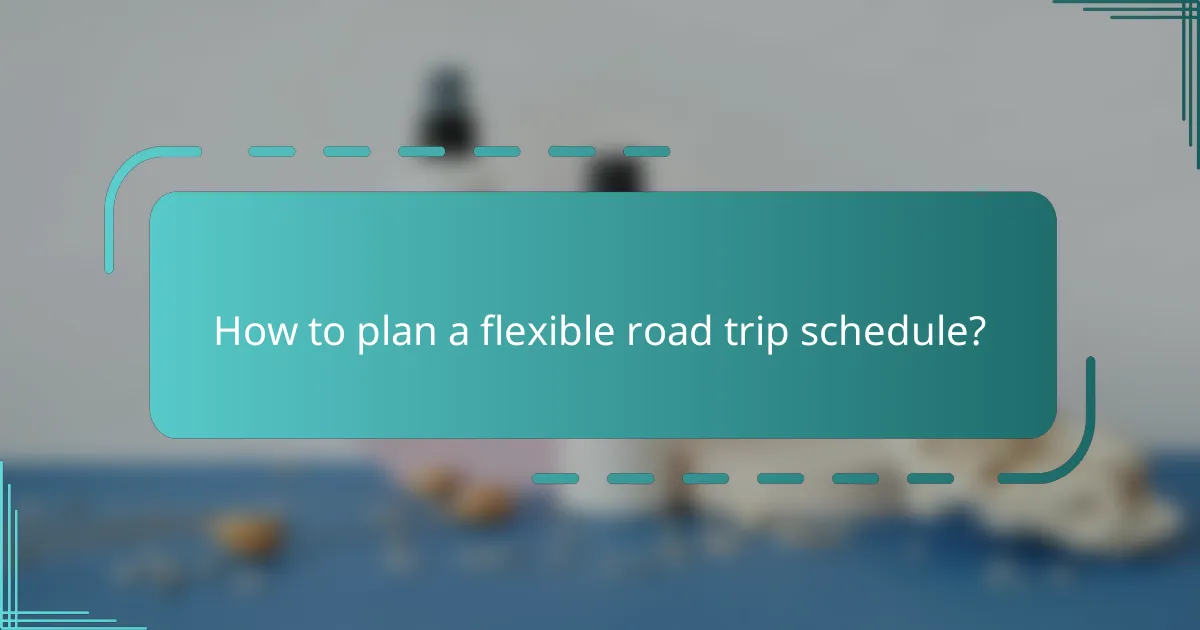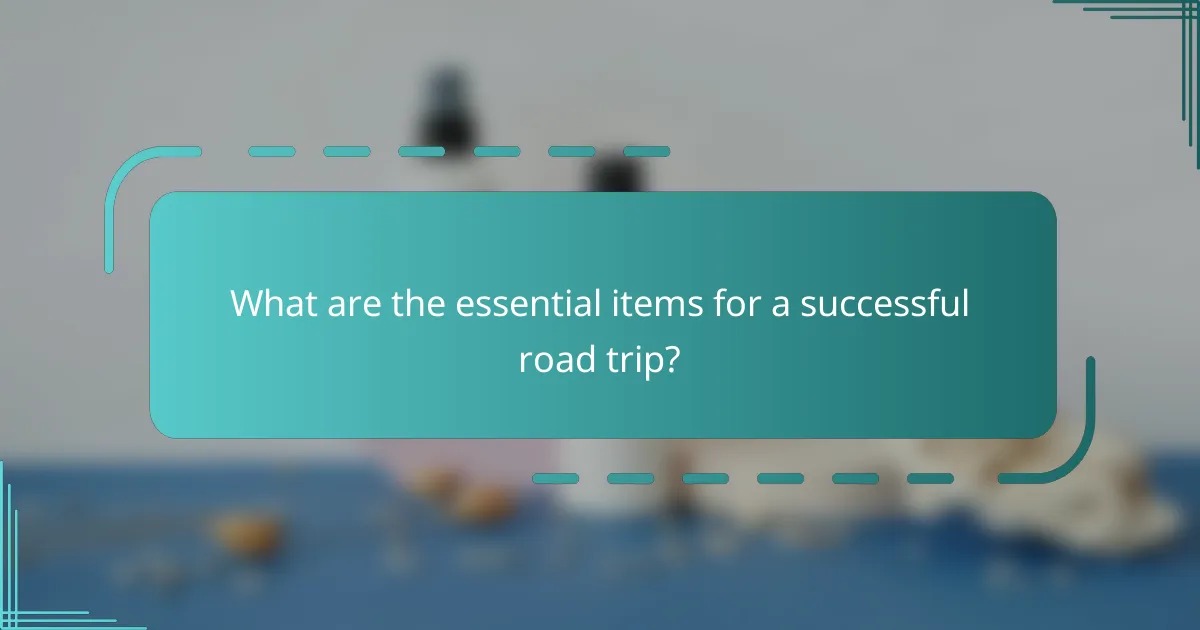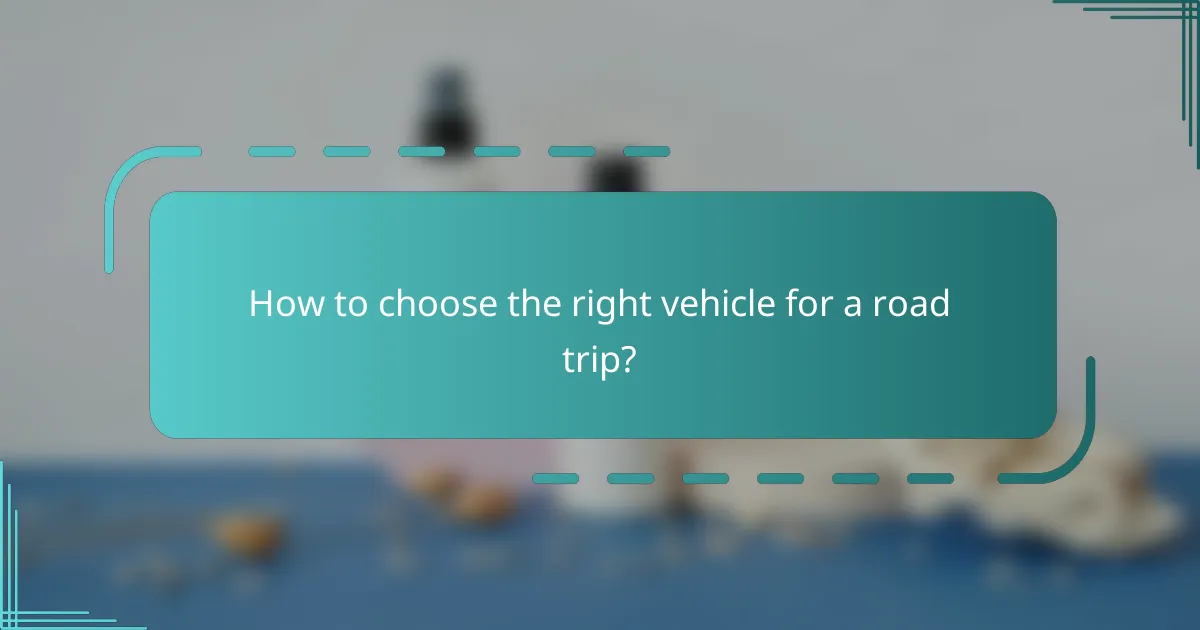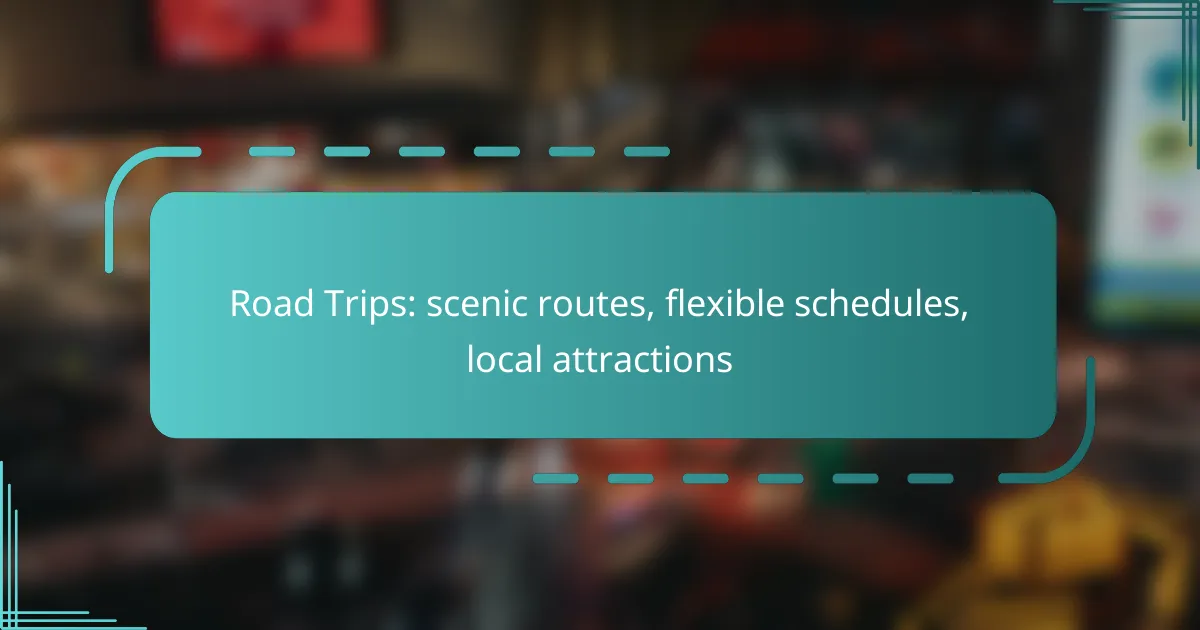Embarking on a road trip opens the door to stunning scenic routes that showcase the beauty of the landscape and the charm of local attractions. With a flexible schedule, travelers can embrace spontaneity, allowing for unexpected detours and memorable experiences along the way. From national parks to quirky diners, each stop enriches the journey and offers a deeper connection to the regions explored.

What are the best scenic routes for road trips in the USA?
The best scenic routes for road trips in the USA offer breathtaking views, unique attractions, and memorable experiences. These routes provide a mix of natural beauty and cultural landmarks, making them ideal for travelers seeking adventure and exploration.
Pacific Coast Highway
The Pacific Coast Highway, also known as California State Route 1, stretches along the stunning California coastline. This route features dramatic cliffs, picturesque beaches, and charming coastal towns, making it a favorite among road trippers.
Key stops include Big Sur, Monterey, and Santa Barbara. Travelers should allow for flexible schedules to fully enjoy the scenic overlooks and local attractions along the way.
Blue Ridge Parkway
The Blue Ridge Parkway is a scenic highway that runs through the Appalachian Mountains, connecting Virginia and North Carolina. Known for its vibrant fall foliage and lush landscapes, this route is perfect for nature lovers.
Visitors can explore numerous hiking trails, waterfalls, and overlooks. Plan to stop at the Blue Ridge Music Center to experience the region’s rich musical heritage.
Route 66
Route 66, often referred to as the “Main Street of America,” runs from Chicago to Santa Monica. This historic highway is famous for its nostalgic charm and Americana attractions.
Travelers can visit quirky roadside attractions, diners, and vintage motels that reflect the spirit of mid-20th century America. Allow time for detours to explore local history and culture along the way.
Great Ocean Road
While not in the USA, the Great Ocean Road in Australia is a renowned scenic drive worth mentioning for its breathtaking coastal views. It features the famous Twelve Apostles rock formations and lush rainforests.
This route is ideal for those looking to experience stunning landscapes and wildlife. Make sure to allocate time for hikes and beach visits to fully appreciate the natural beauty.
Beartooth Highway
The Beartooth Highway is a high-altitude route that connects Montana and Wyoming, offering spectacular views of the Beartooth Mountains. This road is known for its winding curves and dramatic elevation changes.
Travelers should check seasonal accessibility, as the highway is typically open from late May to mid-October. Be prepared for varying weather conditions and take advantage of the numerous pullouts for photography and sightseeing.

How to plan a flexible road trip schedule?
Planning a flexible road trip schedule involves creating a loose itinerary that allows for changes based on real-time conditions and personal preferences. This approach enables travelers to enjoy spontaneous attractions and experiences without feeling rushed or constrained by strict timelines.
Use mobile apps for real-time updates
Mobile apps can significantly enhance your road trip by providing real-time updates on traffic, weather, and local attractions. Applications like Google Maps or Waze can help you navigate efficiently, avoiding delays caused by road closures or heavy traffic.
Additionally, apps like Roadtrippers can suggest interesting stops along your route, allowing you to adjust your plans based on what you discover. Regularly checking these apps ensures you stay informed and can make timely decisions about your journey.
Incorporate buffer time for spontaneous stops
Incorporating buffer time into your road trip schedule allows for unplanned detours and exploration of local attractions. Aim to add at least an hour or two to your travel times to accommodate these spontaneous stops without feeling rushed.
For example, if you plan to drive for four hours, consider scheduling a five to six-hour window. This extra time can lead to memorable experiences, such as visiting a quirky roadside diner or a scenic viewpoint that catches your eye.
Set flexible departure and arrival times
Setting flexible departure and arrival times can greatly reduce stress during your road trip. Instead of adhering to a strict schedule, aim for a general timeframe that allows for adjustments based on your pace and interests.
For instance, if you plan to leave in the morning, consider a window between 8 AM and 10 AM. This flexibility can help you avoid the pressure of rushing and enable you to enjoy the journey more fully, whether it’s stopping for breakfast or taking a scenic route.

What local attractions should you visit on a road trip?
On a road trip, local attractions can greatly enhance your experience by providing unique insights into the culture and landscape of the area. Consider visiting national parks, historic landmarks, local diners, food trucks, and art installations to make your journey memorable.
National parks
National parks offer breathtaking natural beauty and opportunities for outdoor activities. They often feature hiking trails, scenic viewpoints, and wildlife observation areas. Popular parks like Yellowstone or the Grand Canyon provide a range of experiences, from easy walks to challenging hikes.
When planning your visit, check for entrance fees, which can vary from $10 to $35 per vehicle, and consider purchasing an annual pass if you plan to visit multiple parks. Be mindful of park regulations regarding wildlife and campfires to ensure a safe visit.
Historic landmarks
Historic landmarks tell the story of a region’s past and are often key points of interest on road trips. These sites can include battlefields, old towns, and monuments that reflect the local heritage. For instance, visiting Independence Hall in Philadelphia or the Alamo in San Antonio can provide a deeper understanding of American history.
Many historic sites offer guided tours, which can enhance your experience. Check for any admission fees, which typically range from free to around $20, and look for any special events or reenactments that may be happening during your visit.
Local diners and food trucks
Sampling local cuisine is a highlight of any road trip, and diners and food trucks often serve authentic regional dishes. These establishments provide a casual atmosphere and a chance to try specialties that reflect the local culture, such as barbecue in Texas or clam chowder in New England.
When choosing where to eat, look for places with good reviews or those that are busy with locals. Keep an eye out for food truck festivals or markets, which can offer a variety of options in one location. Budget around $10 to $20 per meal for a satisfying experience.
Art installations
Art installations can add a creative twist to your road trip, showcasing local talent and culture. These can range from large outdoor sculptures to murals in urban areas. Cities like Santa Fe or Portland are known for their vibrant art scenes and public art displays.
Consider taking a self-guided tour of art installations in a city, which can often be found through local tourism websites. Many installations are free to view, making them an accessible way to appreciate local artistry while exploring the area.

What are the essential items for a successful road trip?
Essential items for a successful road trip include an emergency kit, navigation tools, and comfort items. These components ensure safety, ease of travel, and a pleasant experience on the road.
Emergency kit
An emergency kit is crucial for handling unexpected situations while traveling. It should include items like a first aid kit, flashlight, jumper cables, and basic tools. Having these supplies can help you address minor issues or injuries without needing immediate assistance.
Consider including a blanket, non-perishable snacks, and water in your emergency kit. These items can be lifesavers if you find yourself stranded for an extended period. Regularly check and replenish your kit to ensure everything is in working order.
Navigation tools
Navigation tools are essential for staying on track during your road trip. A reliable GPS device or a smartphone app can provide real-time directions and traffic updates. Ensure your navigation tools are updated to avoid detours caused by road construction or closures.
In addition to digital tools, having a physical map as a backup can be helpful, especially in areas with limited cell service. Familiarize yourself with your route before you start driving to enhance your confidence and reduce reliance on technology.
Comfort items
Comfort items enhance the overall enjoyment of your road trip. Consider packing travel pillows, blankets, and snacks to keep everyone comfortable and satisfied during long stretches of driving. A good playlist or audiobooks can also make the journey more enjoyable.
Don’t forget to bring personal items like sunglasses, sunscreen, and hand sanitizer. These small comforts can significantly improve the travel experience, making it more pleasant for everyone in the vehicle.

How to choose the right vehicle for a road trip?
Choosing the right vehicle for a road trip involves considering factors like comfort, space, and fuel efficiency. The ideal vehicle should accommodate your travel needs while providing a smooth and economical ride.
Consider fuel efficiency
Fuel efficiency is a crucial factor when selecting a vehicle for a road trip, as it directly impacts your travel budget. Vehicles that offer higher miles per gallon (MPG) can significantly reduce fuel costs, especially on long journeys.
When evaluating fuel efficiency, consider the type of vehicle. Compact cars typically achieve better MPG compared to larger SUVs or trucks. For example, a compact car may deliver around 30-40 MPG, while an SUV might range from 15-25 MPG.
To maximize fuel efficiency during your trip, maintain steady speeds, avoid rapid acceleration, and keep your tires properly inflated. Additionally, using cruise control on highways can help maintain optimal fuel consumption.
